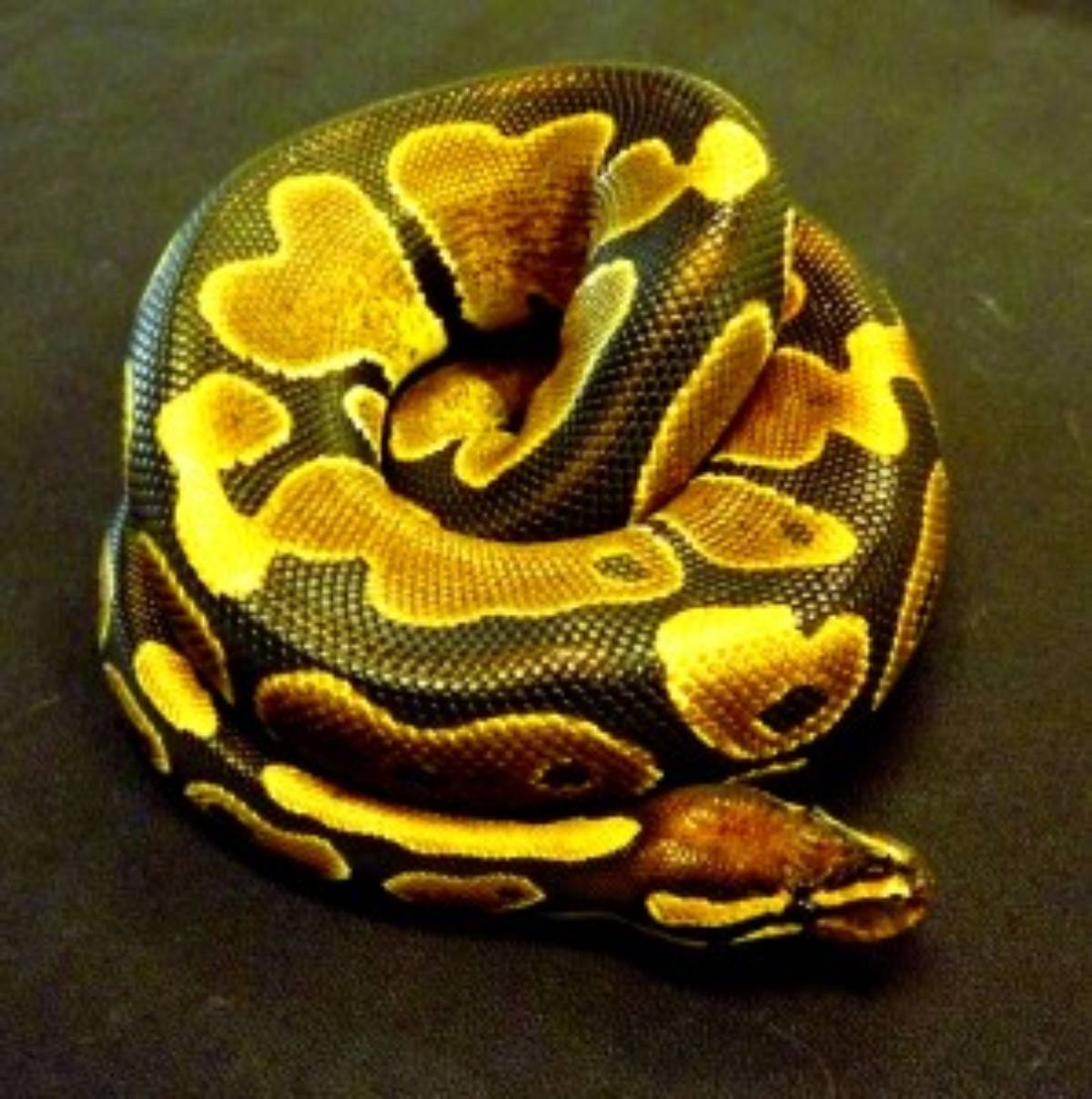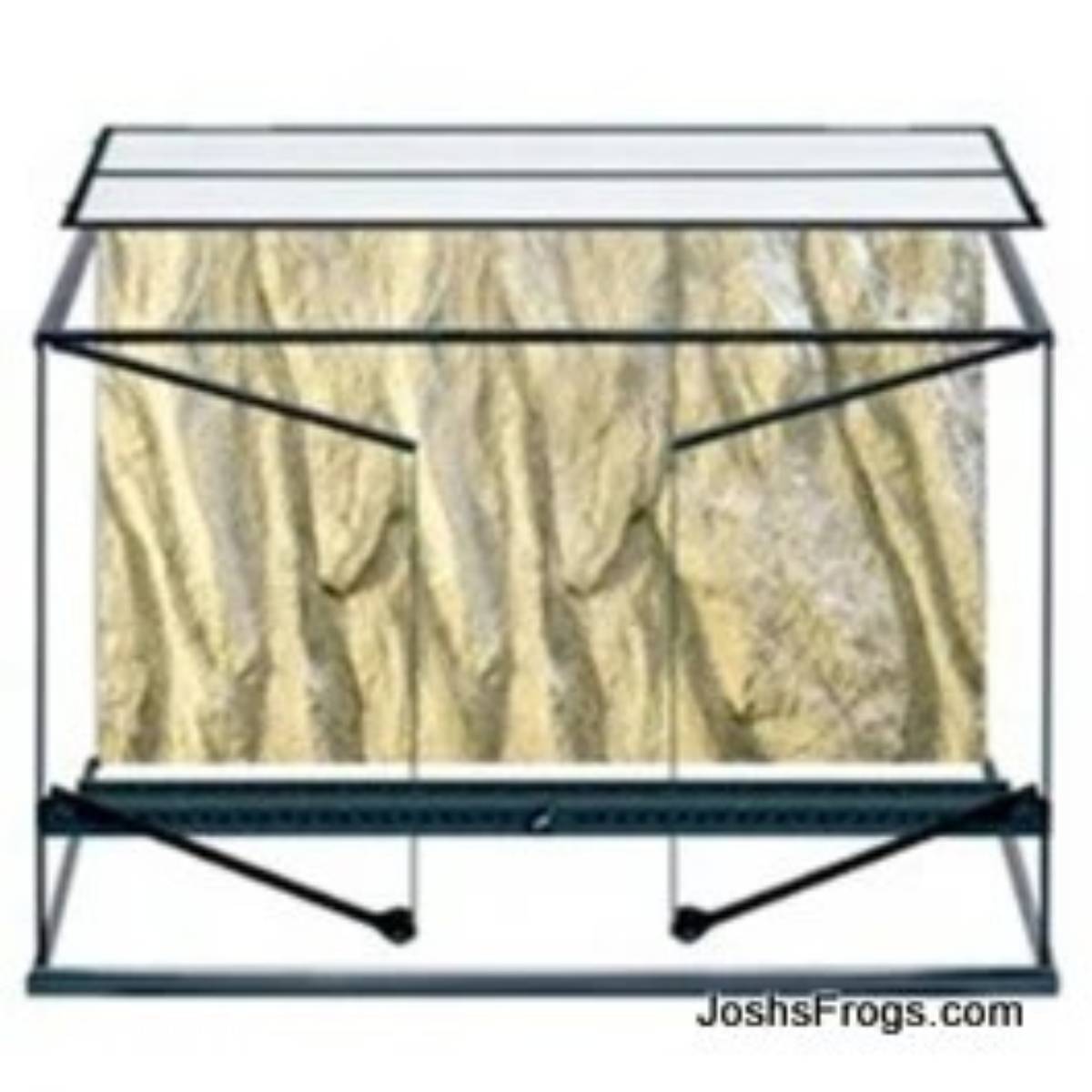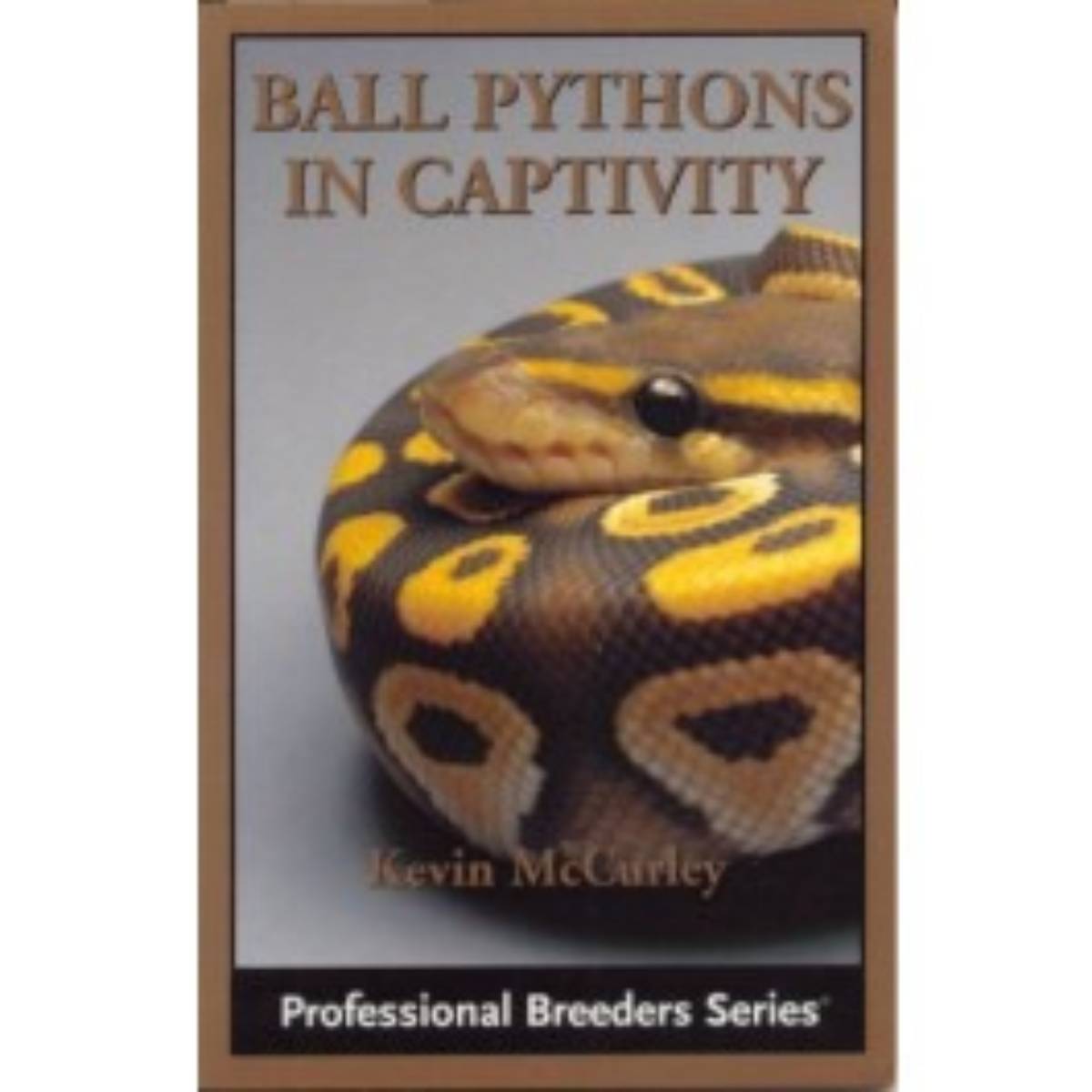Josh's Frogs
Ball Python Care Sheet
Ball Pythons are widely available and make great pets.
Introduction Ball Pythons are commonly available as healthy, captive bred animals from a variety of sources. Pet stores, reptile shows, and private breeders are all great places to purchase a ball python as a pet. Ball pythons are now available in a seemingly infinite variety of color and pattern morphs. Trade Name(s) Ball pythons are sometimes called Royal Pythons in the hobby. Family & Scientific Name Pythonidae; Python regius Range & Origin Western Africa, including Senegal, Mali, Guinea, Sierra Leone, Liberia, Ivory Coast, Ghana, Benin, Nigeria,, Camroon, and Chad through Sudan and Uganda. Ball Pythons prefer grasslands and areas with spare vegetation. Adult Size A large adult female Ball Python will typically be 4.5 to 5 feet, with exceptionally large females reaching up to 6 feet long. Males are substantially smaller, with adult lengthy closer to 3-3.5 feet being typical. Life Span Captive life span of Ball Pythons can easily last over 30 years, so keep this in mind when considering the purchase of a Ball Python. Enclosure When it comes to selecting an enclosure, Ball Pythons are not too picky. Basically, you want an enclosure that retains heat well and allows for easy viewing of and access to your pet Ball Python. Most importantly, you want the enclosure to be secure, as snakes are excellent escape artists. Standard glass aquariums or Exo Terra Glass Terrariums work well for Ball Pythons. If a standard aquarium is used, make sure to use an appropriately sized screen top . A standard 20L glass aquarium (30”x12”) will work well for a young Ball Python (or male), up to about 36"". After your pet Ball Python is longer than that, a 40B (36”x18”) aquarium would work well. If using a screen top, make sure steps are taken to insure proper humidity is maintained, such as covering part of the screen with glass or plastic wrap. Josh's Frogs offers a wide array of ball python care kits that make setting up a home for you new pet inexpensive and easy.Exo Terra Glass Terrariums are suitable for smaller Ball Pythons, but your pet snake may outgrow it.
Substrate Opinions about Ball Python substrates vary widely. Acceptable substrates run the gamut from recycled paper bedding to aspen bedding . Personally, I prefer to keep ball Pythons on reptile carpet or reptile bark . Some keepers even prefer to use newspaper. Spot clean your chosen reptile substrate every day, and replace it every 1-2 months or more often if necessary.Reptile Bark is a good substrate choice for Ball Pythons.
Temperature Temperatures for Ball Pythons are quite easy to maintain with a heating pad . Aim for a basking spot of approximately 90-95F, and a cool end in the high 70s/low 80s. There are several varieties of heating pads available for Ball Pythons - I find Exo Terra's Desert Heat Mat provides the ideal temperature for your pet Ball Python. Heating equipment should always be used in conjunction with a thermostat. Not only will the thermostat make sure your critter is getting warm enough - it'll ensure it doesn't get too hot in case of an equipment malfunction. At night, the temperature should not drop below 75F. If the temperature is too low, a night time heat bulb can be use to raise the temperature. All temperatures should be routinely monitored to insure your pet Ball Python is getting the heat it needs. Many such products exist on the market for this purpose, including temp guns and digital thermometers .Temperatures should be carefully monitored in your pet Ball Python's enclosure.
LightingBall Pythons typically are not very active during the day, and are mostly nocturnal. Therefore, lighting is often not needed for your pet Ball Python. Ball Pythons do require a regular day/night cycle. If your pet Ball Python is not getting this via ambient room lighting or lighting from a window, consider adding a light on a timer.
Social Structure
Generally, Ball Pythons are best housed alone. Many keepers opt to house their Ball Pythons individually, only introducing them together for mating. Diet Ball Pythons are primarily kept on a diet of rodents in captivity. When possible, attempt to feed frozen/thawed mice or rats over live - not only is this more convenient for you, but eliminates the chance a prey animal may harm your pet Ball python. Ball pythons should be provided with a water dish that is large enough for the snake to soak in. This will give plenty of water for the Ball Python to drink, help raise ambient humidity, and aid in shedding. All tap water used should be treated with a water dechlorinator . Change the water once a day.CleaningBall Python enclosures should be cleaned frequently with a 5% bleach solution, then be allowed to air dry. Ball Pythons typically go to the bathroom only 1-2 times a week, so spot cleaning frequently is easy. Change the substrate completely every 1-2 months, or more often if needed.
Handling Ball Pythons are generally very easy to handle. After you have brought a new snake home, allow it to eat successfully several times before regularly handling it. don't handle young snakes more than once a week or so. Make sure to wait several days after feeding your snake before handing it - this allows the snake to digest the prey item.Additional Reading
This care sheet is by no means intended to be the sole source of information concerning corn snakes. Josh’s Frogs greatly recommended additional research via literature and online forums. Some great books for information are available on the Josh's Frogs website.
It’s always a good idea to do as much research as you can, prior to bringing your new pet home.
ConclusionBall Pythons make great reptile pets for beginner, intermediate, or advanced hobbyists. Already desirable for their easy manner and simple care, Ball Pythons are now available in a wide variety of color morphs, making them even more desirable.




